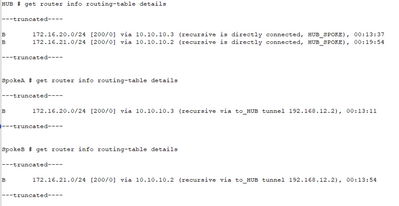- Support Forum
- Knowledge Base
- Customer Service
- Internal Article Nominations
- FortiGate
- FortiClient
- FortiADC
- FortiAIOps
- FortiAnalyzer
- FortiAP
- FortiAuthenticator
- FortiBridge
- FortiCache
- FortiCare Services
- FortiCarrier
- FortiCASB
- FortiConverter
- FortiCNP
- FortiDAST
- FortiData
- FortiDDoS
- FortiDB
- FortiDNS
- FortiDLP
- FortiDeceptor
- FortiDevice
- FortiDevSec
- FortiDirector
- FortiEdgeCloud
- FortiEDR
- FortiEndpoint
- FortiExtender
- FortiGate Cloud
- FortiGuard
- FortiGuest
- FortiHypervisor
- FortiInsight
- FortiIsolator
- FortiMail
- FortiManager
- FortiMonitor
- FortiNAC
- FortiNAC-F
- FortiNDR (on-premise)
- FortiNDRCloud
- FortiPAM
- FortiPhish
- FortiPortal
- FortiPresence
- FortiProxy
- FortiRecon
- FortiRecorder
- FortiSRA
- FortiSandbox
- FortiSASE
- FortiSASE Sovereign
- FortiScan
- FortiSIEM
- FortiSOAR
- FortiSwitch
- FortiTester
- FortiToken
- FortiVoice
- FortiWAN
- FortiWeb
- FortiAppSec Cloud
- Lacework
- Wireless Controller
- RMA Information and Announcements
- FortiCloud Products
- ZTNA
- 4D Documents
- Customer Service
- Community Groups
- Blogs
- Fortinet Community
- Knowledge Base
- FortiGate
- Technical Tip: Implement Hub and Spoke or point to...
- Subscribe to RSS Feed
- Mark as New
- Mark as Read
- Bookmark
- Subscribe
- Printer Friendly Page
- Report Inappropriate Content
Created on
10-18-2022
03:17 PM
Edited on
07-17-2025
02:26 AM
By
Anthony_E
| Description | This article describes how users can implement 'Hub and Spoke' or 'point-to-multipoint' IPSec-ADVPN disabled. |
| Scope |
Scenario:
|
| Solution |
Diagram
For full config, refer to this KB article: Technical Tip: Implement Hub and Spoke ADVPN – usi... - Fortinet Community
spoke-client route must be installed on routing table (protocol BGP)

For some reason, If one do not wish to enable ADVPN feature – however end-to- end communication between clients behind spoke or hub node is a requirement. The exchange-interface-ip option is enabled to allow the exchange of IPSec interface IP addresses. This allows a point to multi-point connection to the hub FortiGate. The add-route option is disabled to allow multiple dial-up tunnels to be established to the same host that is advertising the same network. This dynamic network discovery is facilitated by the BGP configuration; see Configure BGP for details.

By default 'exchange-interface-ip' is disabled.
It can seen that 'virtual-interface-addr' has no ip address of their pairing interface.

Spoke-client cannot communicate with another spoke-client.

Enable 'exchange-interface-ip' on ipsec phase1-interface.
'virtual-interface-addr' now has ip address of their pairing interface.

As debug is performed, what is going at the backend can be seen. Debug application ike-1 'add INTERFACE-ADDR4 10.10.10.1' 'update peer route 0.0.0.0 --> 10.10.10.3'

Now both spoke-clients can communicate with one each other.

Test on: FortiGate v. 7.0.6
Fortinet Documentation: https://docs.fortinet.com/document/fortigate/6.2.3/cookbook/523447/configure-dial-up-dynamic-vpn https://docs.fortinet.com/document/fortigate/6.2.3/cookbook/390427/configure-bgp |
The Fortinet Security Fabric brings together the concepts of convergence and consolidation to provide comprehensive cybersecurity protection for all users, devices, and applications and across all network edges.
Copyright 2025 Fortinet, Inc. All Rights Reserved.





